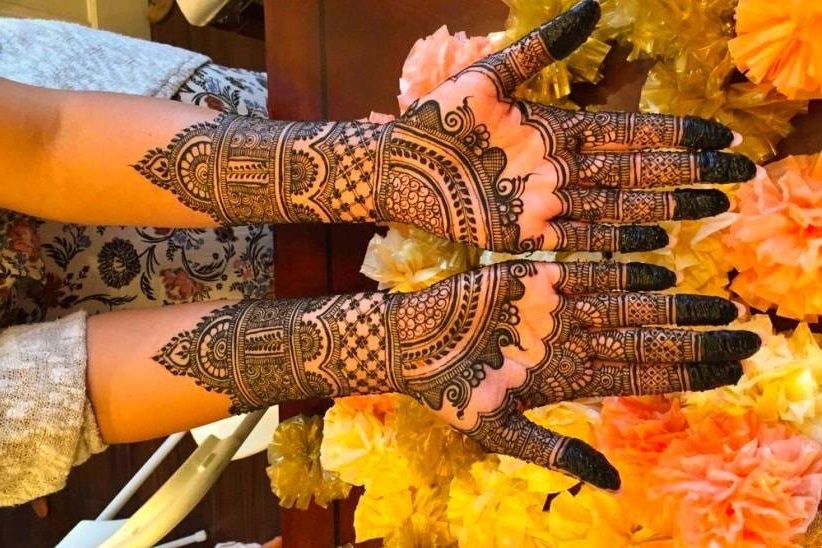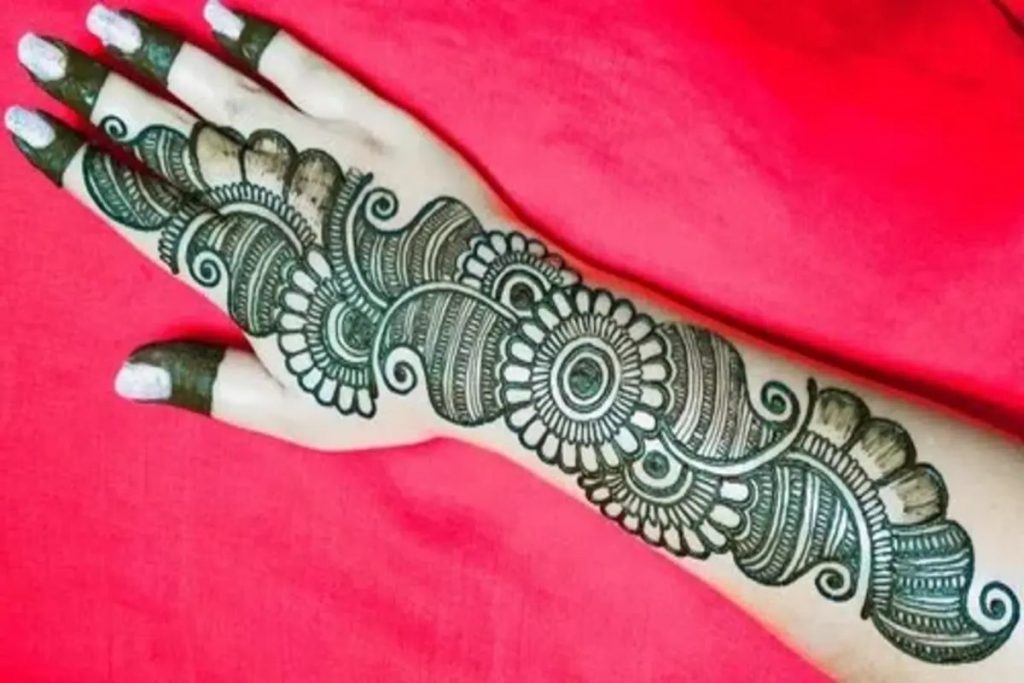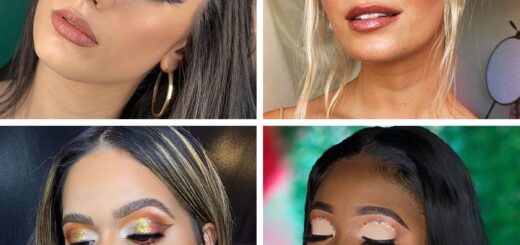The Art Of Traditional Mehndi Designs And Ten Exquisite Designs
Mehndi, also known as henna, has been integral to traditional celebrations and ceremonies in many cultures for centuries. The intricate patterns and designs created with henna paste have not only adorned the hands and feet of individuals but have also served as a form of art and expression. In this article, we scour into the rich history and relevance of traditional mehndi design, explore ten exquisite designs that have stood the test of time, discuss the different types of mehndi, and compare traditional methods to modern ones.

The practice of applying mehndi dates back thousands of years, with its origins believed to be in ancient Egypt and India. It gradually spread to other parts of the world, like the Middle East, Southeast Asia, and North Africa. Mehndi holds significant cultural and symbolic importance in various traditions and celebrations, such as weddings, festivals, and religious ceremonies.
Mehndi is considered auspicious and bring good luck and ward off evil spirits. It is a form of self-expression and beauty enhancement. Applying the latest mehndi designs involves intricate patterns and designs drawn on the skin, gradually darkening over time, leaving behind a beautiful stain lasting several days.
Here is the list of ten exquisite traditional mehndi designs
Arabic Traditional Mehndi Design

Known for its bold and geometric patterns, Arabic Mehndi designs often feature floral motifs, leaves, and vines. These designs typically cover the hands and feet; the negative space is often left blank to enhance the overall intricacy.
Indian Bridal Mehndi Design
Indian bridal mehndi designs are elaborate and ornate, covering the entire hands and feet. They often depict intricate patterns, paisleys, peacocks, and other traditional motifs, symbolizing prosperity, love, and marital bliss.
Moroccan Mehndi Design

Moroccan Mehndi designs are characterized by geometric patterns and bold lines. These designs often feature a combination of squares, triangles, and rhombus shapes, creating a unique and visually striking effect.
Pakistani Designs
Pakistani Mehndi designs are known for their intricate detailing and fine lines. These designs often include elaborate patterns, floral motifs, and peacock motifs, covering the hands and extending to the forearms.
Indo-Arabic Mehndi Design

Indo-Arabic Mehndi designs combine elements of both Indian and Arabic techniques, resulting in a fusion of bold and intricate patterns. These designs often feature floral motifs, paisleys, and geometric shapes.
Rajasthani Mehndi
Rajasthani Mehndi designs are characterized by their bold and symmetrical patterns. These designs often depict peacocks, flowers, and intricate mandala motifs, reflecting the rich cultural heritage of Rajasthan.
African Mehndi Design

African Mehndi designs often feature bold, large-scale patterns with geometric shapes and abstract compositions. These designs are famous for their simplicity and artistic flair.
Turkish Mehndi Design
Turkish Mehndi designs are influenced by Persian and Arabic designs, featuring intricate floral motifs, geometric patterns, and lace-like designs. These designs often cover the hands and extend to the wrists.
Indonesian Mehndi Design

Indonesian Mehndi designs are known for their simplicity and elegance. These designs often feature delicate floral patterns and minimalistic motifs, creating a subtle and refined look.
Gulf Designs
Gulf Mehndi designs are popular in the Middle East and feature bold and large-scale patterns. These designs often incorporate floral motifs, leaves, and intricate geometric shapes, symbolizing beauty and prosperity.
Types of Mehndi
Mehndi designs have evolved, giving rise to various types with distinct characteristics. Some popular styles include:
Traditional Mehndi: Traditional Mehndi refers to the classic designs and patterns passed down through generations. These designs often feature intricate motifs and symbols with cultural and symbolic significance.
Bridal Mehndi: Bridal Mehndi designs are elaborate and extensive, covering the hands, arms, feet, and legs. These designs often incorporate symbols of love, fertility, and prosperity and are essential to weddings in many cultures.
Contemporary Mehndi: Contemporary Mehndi designs represent a modern interpretation of traditional patterns. These designs often incorporate elements of various art forms, such as geometrical shapes, abstract patterns, and portraits.
Traditional vs. Modern Mehndi Designs
While traditional mehndi designs have a timeless appeal, modern mehndi designs have recently gained popularity. Traditional methods focus on intricate patterns, cultural motifs, and symbolism, whereas modern designs embrace innovation, experimentation, and fusion with other mehndi design art forms.
Modern mehndi designs often incorporate elements like glitter, gemstones and even the use of different henna colors. These designs cater to the evolving tastes and preferences of individuals who seek a contemporary twist to the age-old art form.
Conclusion – Traditional mehndi design art does not merely pattern adorning the skin; they represent a rich cultural heritage and hold immense symbolic significance. The beauty and intricacy of these designs have captivated people across the globe. As the art of Mehndi continues to evolve, it is essential to appreciate and preserve traditional methods while embracing the creativity and innovation of modern interpretations. Whether it’s an elaborate Indian bridal design or a minimalistic Indonesian pattern, mehndi designs will continue to enchant and adorn individuals, connecting them to their cultural roots and celebrating the beauty of this ancient art form.
FAQs
Q: What are the latest Mehndi designs?
A: The latest mehndi designs often incorporate a fusion of traditional and modern elements. They may include intricate patterns, geometric shapes, and contemporary motifs. Keeping up with current trends, artists also experiment with different styles to create unique and personalized mehndi designs.
Q: Where can I find the best Mehndi designs?
A: The best traditional mehndi design can be found through various sources, including bridal magazines, social media platforms like Instagram and Pinterest, mehndi artist websites, and even by consulting professional mehndi artists specializing in intricate and traditional designs.
Q: What makes traditional mehndi designs art?
A: Traditional mehndi designs are considered an art form because they require skill, precision, and creativity to create intricate patterns and motifs. The plans are meticulously drawn by hand, making each piece unique and reflective of the artist’s expertise and artistic vision. Traditional mehndi designs also hold cultural and symbolic significance, making them essential to cultural celebrations and rituals.
Q: What role does mehndi have in culture?
A: Nowadays, traditional mehndi is primarily applied during happy social gatherings to mark special occasions like weddings and birthdays. In certain cultures, the darker the henna stain, the greater the love between two people. The henna paste represents good health and success in marriage.
Q: How many different kinds of traditional mehndi exist?
A: Mehndi comes in three different forms. Mehndi that is natural, black, or red. These are all used for various purposes.


